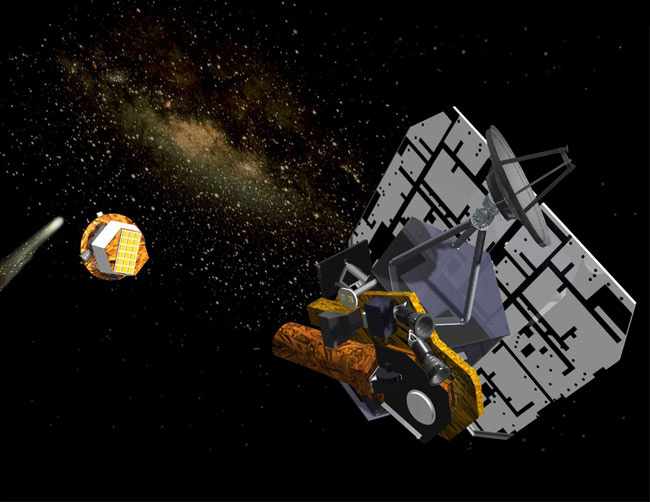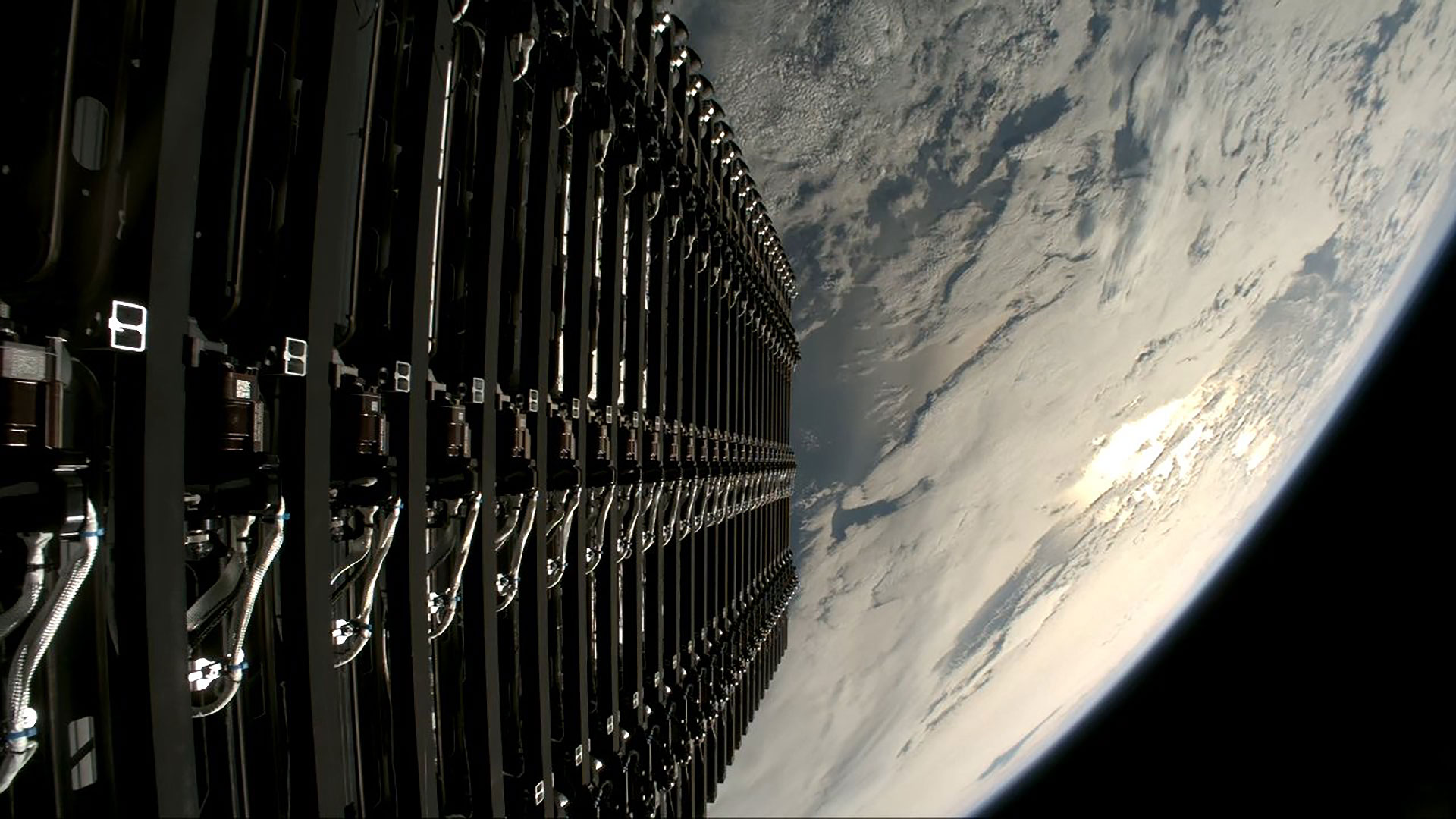Recycled NASA Spacecraft to Fly by Earth, Comet

A recycled NASA spacecraft that has already bombed one cometis headed for another one, after a slight detour by Earth that required atricky engine maneuver to put it on track for both flybys.
The Epoxispacecraft, which was originally built as the mother ship for NASA's DeepImpact mission mother ship, fired its engines on May 28 for 11.3 seconds tofine-tune its planned June 27 flyby past the Earth and trip to visit the cometHartley 2 in November.
"While it was a small burn, it was a big step ingetting us to Hartley 2," said Tim Larson, Epoxi project manager at NASA'sJet Propulsion Laboratory (JPL) in Pasadena, Calif. "Humanity's fifthclose-up viewof a comet is less than five months away."
The maneuver sets the stage for a planned Nov. 4 swing bythe comet Hartley 2, though Epoxi will just observe that icy wanderer and not letloose an impactor probe to crash into it like the original Deep Impact missiondid to the comet Tempel 1 in 2005.
That earlier Deep Impact mission intentionally crashed aprobe into Tempel 1 to determine the comet's composition. [Photosof the comet crash.]
Epoxi's recent engine burn changed the spacecraft's velocityby a mere 0.1 meters per second (less than a quarter mile per hour). But thatwas all the mission navigators needed to take advantage of Earth's gravity to geta speed boost for Epoxi's trip to Hartley 2.
Epoxi is an extended, unmanned mission of the DeepImpact space probe. Its name is derived from its dual scienceinvestigations ? the Deep Impact Extended Investigations (DIXI) and theExtrasolar Planet Observation and Characterization (EPOCh).
Breaking space news, the latest updates on rocket launches, skywatching events and more!
The spacecraft was built for NASA by Ball Aerospace &Technologies Corp., located in Boulder Colo. JPL manages Epoxi for NASA'sScience Mission Directorate in Washington, D.C. The University of Maryland isthe Principal Investigator institution.
- Deep Impact's Top 10 Comet Crash Images
- NASA's Stardust Journey to a Comet
- Comet's Collision with the Sun Captured in 3-D

Space.com is the premier source of space exploration, innovation and astronomy news, chronicling (and celebrating) humanity's ongoing expansion across the final frontier. Originally founded in 1999, Space.com is, and always has been, the passion of writers and editors who are space fans and also trained journalists. Our current news team consists of Editor-in-Chief Tariq Malik; Editor Hanneke Weitering, Senior Space Writer Mike Wall; Senior Writer Meghan Bartels; Senior Writer Chelsea Gohd, Senior Writer Tereza Pultarova and Staff Writer Alexander Cox, focusing on e-commerce. Senior Producer Steve Spaleta oversees our space videos, with Diana Whitcroft as our Social Media Editor.
